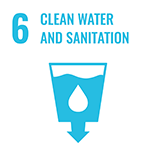Conservation of Queuña forests (Polylepis spp.) of Vilcanota range, Peru

Summary
The objective of this project is to protect and restore Queuña forests (Polylepis spp.), their water, landscape and biodiversity, carried out together with local communities through traditional collective work strategies.
The project is oriented to reforestation, conservation, sustainable resources management and ecotourism. These forests capture moisture from the air and retain rain, snow and mist, which is derived to high Andean wetlands (bofedales), preventing their rapid runoff. Local and valley populations depend on these wetlands for drinking water, as well as for pastures used for cattle ranching and agriculture. These forests, together with the wetlands, maintain optimal humidity conditions that help buffer the strong changes in temperature between day and night at high altitudes, temperature stability delay the melting of glaciers, make it possible for wildlife species to survive, and to reduce erosion processes. Private conservation areas (PCA) are created and managed by the communities, in synergy with the responsible authorities. These PCA are oriented to work in ecotourism, which is a legal tool to produce payments for ecoservices, that allows preserving the scenic beauty and enhancing the unique cultural value of the communities. It is a cost-effective solution for long-term climate resilience.
Further information:
ECOAN, 2018. (In Spanish) – https://www.youtube.com/watch?v=cEgFcXGiVR0
ECOAN, 2017. Queuña Raymi 2016 – Reforestation Activity in the Peruvian Andes (In Spanish). https://www.youtube.com/watch?v=qitwkf3OdxU
Overview
- Implementation sites:
-
- Multiple countries
- Single location
- Mountain region:
-
High Andes, Vilcanota-Urubamba range
- Province:
-
- Urubamba and Calca provinces, Cusco department
- Site locations:
-
Urubamba and Calca provinces, Cusco department
- Solution scale:
- Area Covered:
-
- 1,500 km2
- Ecosystem type(s):
- Solution type(s):
- Other Solution(s) type(s):
-
- reforestation, rescuing ancient local knowledge
- Climate impact(s) addressed:
- Other climate impact(s) addressed:
-
- water stress
- Climate impact time-scale(s):
- Main benefit associated with the solution:
- Co-benefit(s) associated with the solution implementation:
-
- Climate risk reduction (e.g. reduced risk from floods)
- Economic benefits (e.g. job creation, tourism)
- Political benefits (e.g. reduced displacement/migration)
- Social benefits (e.g. poverty reduction, inclusiveness and equity, health and well-being)
- Technical benefits (e.g. innovative use of geographic information systems)
- Implementation timeline:
-
- 2000 - 2025
- Sendai targets:
-
Solution details
Main beneficiaries & outcomes
More than 21 peasant communities, composed of more than 8,650 people from the Quechua ethnic group.
Planning and implementation
The main organizations involved are Asociación Ecosistemas Andinos (ECOAN), which administrates and implements the “Acción Andina” Programme, having a very important role in the project outcomes, together with Global Forest Generation, American Bird Conservancy and Acción Andina.
Finance
Since 2000 the project started to be founded by American Bird Conservancy – ABC. Trust Fund of Conservation International – Green Climate Fund –CI-GCF–) provided funds on the beginning, which were administered by the National Fund for Natural Areas Protected by the State – PROFONANPE (Vilcanota Polylepis Portfolio). Also participating are Green Finance for Latin America and the Caribbean (www.greenfinancelac.org) and Fondo de las Américas del Perú (FONDAM).
Total cost of the endowment (2000-2025) = US $ 1,000,000.-
The project is listed in the GCF-CI Annual Reports.
It is an internal project and managed by PROFONANPE (https://www.greenclimate.fund/ae/profonanpe#projects).
Since 2018, this became part of Accion Andina Project, and the main and principal supporter and donor is Global Forest Generation (GFG) in coordination with many other global supporters to manage the program and mission along the Andes.
(https://www.globalforestgeneration.org)
Innovation
Reforestation with native tree species –given their adaptations to climate and altitude– regenerates forests that allow the natural retention of water, a limiting resource, and its gradual discharge. In turn, nutrients are retained, forming fertile soils, and carbon is stored. The activities involved benefit the largest percentage of the community and are implemented with the coordination and participation of the community as a whole. These large-scale actions are only possible with the implementation of an ancestral practice that is part of the Andean worldview, communal work (locally called Ayni, Minka or Minga).
More than 1,891,100 specimens of eight species of the genus Polylepis have been planted in the Vilcanota-Urubamba range, plus 85,000 specimens of other species, the vast majority native (2001-2020). In addition, these communities have generated nine Private Conservation Areas (ACP) recognized by the Ministry of the Environment of Peru (MINAM).
Performance evaluation
Through the “Explorer Land” platform, the program monitors the conditions of areas pre and post planting. These are mapped before the intervention, to estimate the extension of natural forests, areas to be reforested and possible conservation areas. This is verified through the polygons of the program’s intervention areas, which feed a database that includes geo-referenced photos and data from the communities or groups that are directly related to these areas. The monitoring indicators include the percentage of seedlings that take root, the number of trees planted and the hectares covered by reforestation.
Long term project sustainability and maintenance
After the possible beneficiaries of the project had been identified, the communities signed agreements with ECOAN, including respectful treatment and a willingness to comply, caring for the environment in general, for the forest, and the commitment to the restoration of ecosystems. In return, ECOAN agrees to act as a facilitator in the process and to support implementation. The National Service of Natural Protected Areas by the State (SERNANP) also participates in the Private Conservation Areas (PCA), monitoring the objectives for which they have been created.
Capacities for design and implementation
Knowledge
Ancestral practices of social work and respect are rescued and implemented, without which it would be impossible to achieve the large scale of work. It has been detected that following the implementation of the project, many young people finish their studies and advocate for the good of the community, with the advice of the elderly.
The technical training to the locals allows: management and coordination of the production, the installation of nurseries and transplantation of the seedlings. In each communal nursery the genetic material from nearby Polylepis forests is reproduced from thousands of cuttings and seedlings (juvenile specimens extracted from natural regeneration) for reforestation.
Technology
The project has enabled access to solar panels and gas for domestic use, communication facilities and Internet. Likewise, greenhouses or awnings have been incorporated to improve the production of vegetables for consumption. As well, the improvement of pastures is carried out by incorporating seeds of more palatable species for livestock. Additionally, training and awareness-raising on environmental and management aspects are carried out, so that communities can request the municipalities the fulfillment of their needs.
Political / Legal
The ancestral organization of the community, where working for the common benefit is so much imbedded and valued, allows the project to reach a noticeable impact in the forest restoration process after ECOAN and other NGOs proposal. Besides, communal property and Private Conservation Areas (PCA) declared by communities are recognized by the Peruvian laws. These PCA allow further developing their commerce with tree nurseries, textiles and tourism, complementing their income for the traditional agro production.
Institutional
The project is aided by the business sector which collaborates with founds, while municipalities and governmental agencies (SERNANP and MINAM) provide the legal frame to the reforestation activities and PCA creation. ECOAN coordinates the link between the different stakeholders, besides providing technical knowledge.
Socio-cultural
The program is focused on local communities, and is based on respect for the ancestral culture and structure, still in place. Communities interact with local institutions, private companies, and tourists. Within the framework of the project, the Queuña Raymi was created, a reforestation festival in which all the actors involved participate. The communities make up the Network of Private Conservation Areas (Vilcanota Trek http://www.vilcanotatrek.com) in which they maintain a commitment to mutual support in sustainable development and conservation. In this way, they collaborate to protect the headwaters of their basins and ensure the availability of water according to their needs. In these processes, all communities participate in decision-making for reforestation and tourism management on the so-called Vilcanota Trek route.
Outlook & Scalability
Barriers and adverse effects
Non identified
Transformation and future outlook
With the restoration plan of Accion Andina, it is expected to accomplish that when the project of reforestation of the Polylepis forest achieved a sufficient scale, many of the local effects of CC will be stabilized by the ecosystemic services they provide.
Potential for upscaling and replication
The project of reforestation of the Polylepis forest is already being replicated in the region, but still needs to upscale, because Peru has the highest diversity of Polylepis tree species along the Andes and, consequently, the needs are huge.
It is recommended to work more with social groups and / or communities that practice communal work or have a communal structure, for the success of the project.
Information, infrastructure and technology: Depending on the goal, it will be necessary to hire personnel from various specialties, including nursery workers, agronomists, lawyers, biologists, GIS engineers, etc.
Institutional: In almost all regions of the High Andes of Peru, where the Polylepis forests occur and in the headwaters of the basin, links should be established with local authorities, as well as agreements with responsible authorities for the improvement of production / sale of agricultural products.








Comments
There is no content